#native bee
Explore tagged Tumblr posts
Text




Beetles and bees and crickets oh my!
#the darkling beetle and the Jerusalem cricket were BOOKING it they had places to BE#darkling beetle#native bee#mining bee#Jerusalem cricket#insect#insects#bug#bugs#take a walk with me
21 notes
·
View notes
Text

My mason bees are waking up!
18 notes
·
View notes
Text
Oh! This is a male! The male bees like to sleep together on the one plant stem while the females make burrows to sleep in!


Source: Heard, T, A. (2016). The Australian Native Bee Book: Keeping stingless bee hives for pets, pollination and sugarbag honey. Sugarbag Bees. ISBN 978-0-646-93997-1 (paperback)
Here's also one I removed from a room a few months ago!




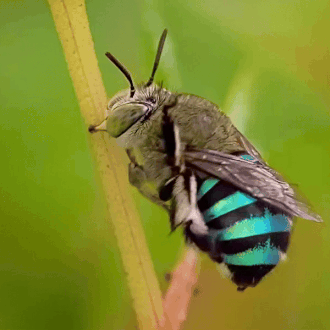

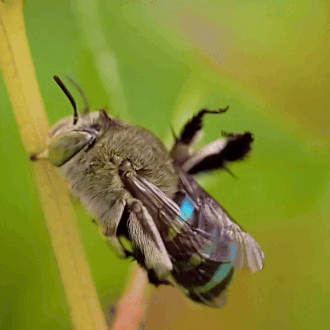
a blue-banded bee's before bed evening ritual | vishalvjadhav on ig
#gifs#Tim Heard#Amegilla cingulata#blue banded bee#australian banded bee#amegilla#digger bees#apidae#bees#hymenoptera#insects#arthropods#animal#bugs#australian wildlife#sugarbag honey#The Australian Native Bee Book: Keeping stingless bee hives forpets#pollination and sugarbag honey / Tim Heard#native bee
2K notes
·
View notes
Text
A caveat to this study: the researchers were primarily looking at insect pollinator biodiversity. Planting a few native wildflowers in your garden will not suddenly cause unusual megafauna from the surrounding hinterlands to crowd onto your porch.
That being said, this study backs up Douglas Tallamy's optimistic vision of Homegrown National Park, which calls for people in communities of all sizes to dedicate some of their yard (or porch or balcony) to native plants. This creates a patchwork of microhabitats that can support more mobile insect life and other small beings, which is particularly crucial in areas where habitat fragmentation is severe. This patchwork can create migration corridors, at least for smaller, very mobile species, between larger areas of habitat that were previously cut off from each other.
It may not seem like much to have a few pots of native flowers on your tiny little balcony compared to someone who can rewild acres of land, but it makes more of a difference than you may realize. You may just be creating a place where a pollinating insect flying by can get some nectar, or lay her eggs. Moreover, by planting native species you're showing your neighbors these plants can be just as beautiful as non-native ornamentals, and they may follow suit.
In a time when habitat loss is the single biggest cause of species endangerment and extinction, every bit of native habitat restored makes a difference.
#nature#wildlife#animals#ecology#environment#conservation#science#scicomm#pollinators#bees#butterflies#hoverflies#insects#native plants#habitat restoration#solarpunk#hopepunk#naturecore#wildflowers#good news
5K notes
·
View notes
Text
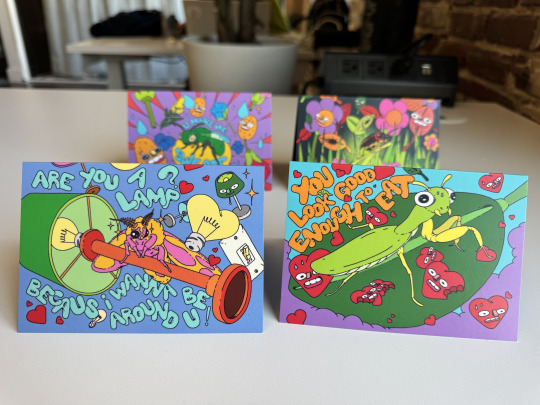
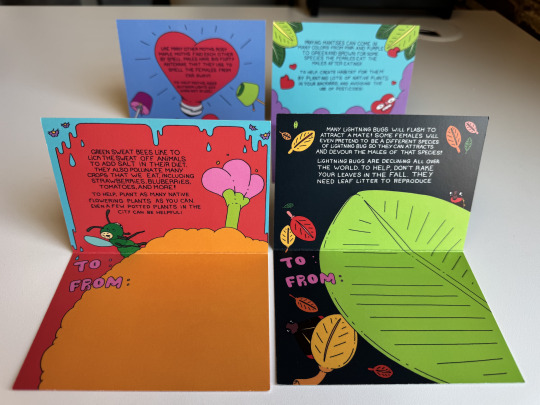
Inject a little science into your Valentines Day with LOVE BUGS valentines!
GET 'EM HERE!
I really love putting science into things people are already doing. Each of these cards has a fact about the animal AND something you can do to HELP the animal. Let's care for our native insects! We love biodiversity!
(I also love getting snail mail. It's just a delight.)
Send these with your kid to school for valentines day exchanges, send them to your friends, bring them to work to bring a little joy (and science!) to the office.
They were designed by Michele Scott in Philly, and printed & packed here at Skype a Scientist HQ (also in Philly).
All sales support science education nonprofit Skype a Scientist!
Tell your friends. Get some Love bugs.
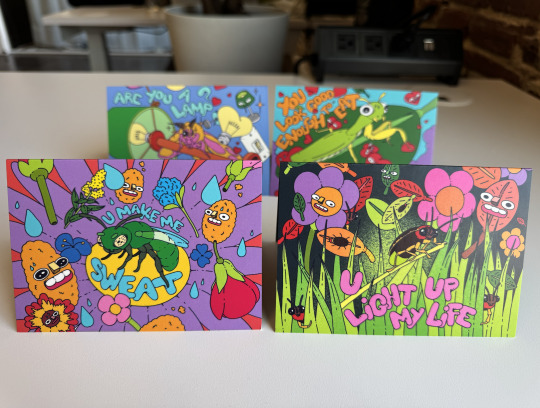
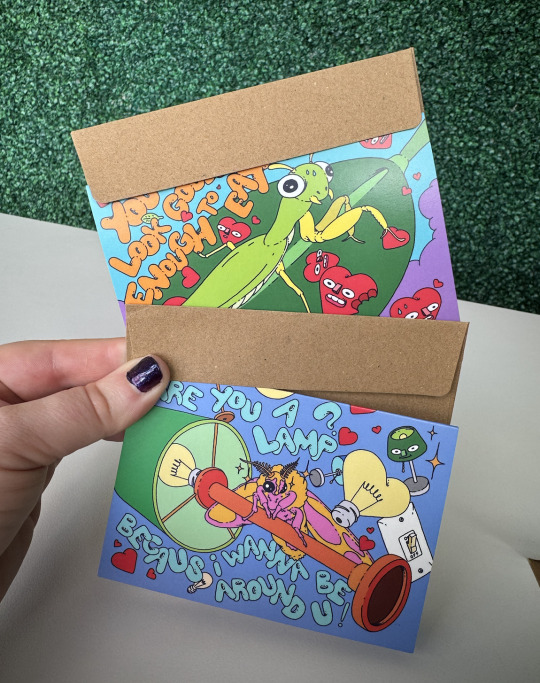
#squid facts#Science#Skype a Scientist#Love bugs#valentines#valentines day#insects#biodiversity#bugs#mantis#rosy maple moth#lightning bug#firefly#Sweat bee#native bugs
2K notes
·
View notes
Text

4K notes
·
View notes
Text

Rosa cv. with native bee
08-JAN-2023
Melbourne, Vic
#australia#victoria#melbourne#flower#white#white flower#rose#white rose#rosids#rosales#rosaceae#rosoideae#roseae#rosa#australian natives#native fauna#native bee#insect#arthropod#bug#invertebrates#arthropoda#insecta#hymenoptera#apidae
0 notes
Text
Though there can be many negative impacts of honeybees on the landscape in North America: honeybees are not going anywhere and beekeepers are some of the most powerful allies in the fight against insecticides and herbicides. Right now we NEED honeybees to pollinate our crops. Eventually we should move towards requiring native hedgerows to reduce our reliance on honeybee shipments...not only will this be cheaper for farmers in the future, it will help reduce the amount of insect diseases that are spread by honeybees. (As the bees are shipped all over the continent) However, honey is always going to be something people want. The important thing for beekeepers to keep in mind, is making sure there are not too many hives per square mile! A single hive is 15,000-50,000 additional mouths to feed in an area that may already have limited pollen resources for native bees. (Who are often solitary) Responsible bee keepers can improve the impact their hives have by learning how many hives are in an area, planting abundant native flower resources on whatever land they manage, and taking feral hives out of the ecosystem rather than propagate new hives from scratch, or buying queens from retailers. People who keep honeybees are not bad people for loving honeybees! Honeybees are fascinating animals and often act as ambassadors to the beauty of the insect world. There are many ways we can and do work together to mitigate harm on all insects!
2K notes
·
View notes
Text
**URGENT** HELP SAVE THE USGS BEE LAB!
PLEASE circulate this as widely as possible, as soon as possible.
Hi all, you may not know me but I am a native bee researcher in the eastern US. People like me work to study and protect the 3600 species of native bees in North America, many of which are in severe decline.
We just received devastating news, that unfortunately was not surprising. The Trump administration's proposed 2026 budget is set to defund most of the ecological research happening at the USGS, and that includes zeroing out the budget for the USGS Native Bee Inventory & Monitoring Lab.
Don't know them? Maybe you've seen stunning photos like this:

These gorgeous and evocative focus-stacked photos of native bees on black backgrounds - all of which are public domain - come from the USGS Bee Lab (here's their Flickr). Through these, they've helped bring the beauty and importance of native bees to the public's attention. Hundreds if not thousands of news articles, videos, and publications use these photos.
But that is just one tiny slice of what the USGS Bee Lab does for pollinator conservation. Its primary role is much bigger; they provide technical support, research collaborations, and financial & grant partnerships to federal and state agencies, academic institutions and researchers, and much more, so we can study, manage, and protect North America's wild pollinators. They conduct research of their own that has led to species rediscoveries, and produce invaluable resources that have greatly advanced our understanding of wild bees and our approaches to studying and conserving them. They also provide the essential and irreplaceable service of bee identification. For those who don't know, identifying bees is hard. Sometimes Really Hard. And this lab is one of just a handful of places in the entire country who can identify some of the toughest groups of bees, and who sit on the forefront of breakthroughs on taxonomy and identification that the rest of us in this field rely on. Without this service, agencies and researchers trying to survey and monitor bees in order to track population declines, manage land, and get policy changed are stuck with a lot of nameless bees, severely limiting the usefulness of that data.
Tens of thousands, if not hundreds of thousands, of bee specimens pass through this lab annually, plus the thousands in permanent storage, from long-term monitoring efforts by state and federal agencies, and researchers like myself. They operate at a greater capacity than basically any other institution doing this kind of work. Few if any bee researchers in the eastern US, or even the country, have not benefitted from this lab's work, and those benefits are passed on to you through being able to protect pollinators and the services they provide both in agriculture and ecosystems.
This lab is headed up by scientist Sam Droege, who has dedicated decades of his life to this cause, and whom I consider not just a research partner but, humbly, a friend. I am utterly indebted to him for helping me get my start in this field, and for the support and kindness he has shown me and every other young professional who is passionate about pollinators. The Lab operates with an insanely small budget already, and a very limited staff, yet the impact they have is exponentially outsized. Losing the USGS Bee Lab would be a devastating blow to pollinator conservation in this country, at a time when native bee species are sitting on the precipice, and sustainable agriculture is non-negotiable for our future.
You can read more about the Bee Lab here. The Lab is not well-publicized, but it's a lifeline for the many dedicated people who work to try and protect pollinators and the environment at large.
SO WHAT CAN YOU DO?
Sam Droege has sent out a request for help, and has encouraged us to post on social media. This is what he wants you to do to help us save the Bee Lab.
This is verbatim:
What is Happening: · The USGS Bee Lab is at risk of being permanently closed due to cuts in the 2026 Federal Budget and looming federal RIF’s · Specifically, the Ecosystem Mission Area (EMA) budget, which funds the USGS Bee Lab and the Eastern Ecological Science center has been zeroed out · Thousands of layoffs to hit Interior, National Parks imminently - Government Executive What you can do · Write to your representatives, the White House, and the Department of the Interior that they should restore the funding for the USGS Bee Lab · Send digital or physical letters, write emails, post to social media What you should be highlighting: · Personal anecdotes about how the Bee Lab has impacted you or your organization · How important the research the Bee Lab is conducting is to your state Contact Information: 1. Representatives: Find Your Representative | house.gov 2. Senators: U.S. Senate: Contacting U.S. Senators 3. White House: Contact Us – The White House 4. Interior: [email protected] Send a copy of the letter to [email protected] Pass this email around. Post your response to social media
IT'S OK if you are not a scientist and have not directly interacted with the Bee Lab. Have you seen the lab's photos? Are you concerned about native pollinator declines? Are you aware of any pollinator conservation initiatives or policies in your own state - those almost certainly have drawn, directly or indirectly, from work the Lab has done. Speak about American food production and agriculture, how the Lab's research and collaborations are essential to safeguarding pollination services (this might help reach across the aisle).
Sam urges that these letters, emails, phone calls, etc, must happen quickly - within the next couple days. This information went out on May 8th and that is the day I am posting this. So please, don't wait.
If 'save the bees' has ever meant anything to you, this is the agency that is playing one of the biggest roles in this country in making that happen. Please, contact your representatives, and pass this call to action along however you can. Thank you.
#bees#native bees#pollinators#native pollinators#save the bees#usgs bee lab#usgs native bee inventory and monitoring lab#yes sam put his email out there so i'm going to post it as is#i just visited the lab in person a couple weeks ago and they're scrambling to get bee specimens in storage and out the door#i had that sinking feeling that i had to get my bees identified as soon as possible or i might not get the chance and here we are#i told him I'd help him in whatever way I can and so for his sake and mine please help us.#if you're a science blog and follow me PLEASE spread this around#time is of the essence. post on other platforms.#want something specific to mention? they rediscovered the chestnut mining bee. there's a smithsonian article that just came out#all about that. so you know. that was KIND OF A BIG DEAL#they also literally developed THE standardized protocol for bee monitoring. used by federal agencies and researchers alike.#THEY ARE THE BEE PEOPLE. THE BEEPLE. THE GOAT. THE OG
490 notes
·
View notes
Text


protect local pollinators design, available as a postcard print or a sticker! my shop update is available to browse here
#my art#art#insect#bugs#monarch butterfly#butterfly#milkweed#native plants#plants#midwest wildlife#bees#wasp
366 notes
·
View notes
Text

🪻🌱🐝 💜 🌿 ✨ // violets & violet miner bees // part of my natives + pollinators series // gouache on paper
tiny violet miner bees (Andrena violae) are a specific pollinator: they pollinate wood & dog violets in the Northeast, and show a strong preference for blue violets. letting your grassy yard rewild itself and grow violets every spring not only lets you make violet syrup, it also gives violet miner bees their most important food source and increases local pollinator diversity.
#my art#gouache#illustration#painting#art#cottagecore#artists on tumblr#botanical#spring#violet#pollinator#pollinators#native wildflowers#native plants#eco lawn#botanical illustration#violet miner bee#bees#cw: insects#insects
1K notes
·
View notes
Text

Native bee on a chive blossom.
3 notes
·
View notes
Text
Dandelion News - April 15-21
Based on the results of this poll, for the next few weeks I’m gonna test out doing 5 articles a week instead of 10, as part of an effort to maintain my own mental health. If these half-sized posts get markedly fewer notes, I’ll try to figure out a different compromise.
Like these weekly compilations? Tip me at $kaybarr1735 or check out my Dandelion Doodles!
1. Chicago Teachers Union ratifies groundbreaking contract cementing LGBTQ+ protections

“The agreement includes meaningful raises, smaller class sizes, and more classroom resources, but it also codifies some of the most comprehensive LGBTQ+ protections ever included in a public school labor deal. Among the new provisions are gender-affirming health care for staff, a trained Gender Support Coordinator in every school, codified protections for chosen names and pronouns, and a mandate that every school upholds inclusive curriculum standards and supports student-led Gender and Sexuality Alliances.”
2. Clean energy from rain? Scientists generate electricity from falling droplets

“Researchers from the National University of Singapore have used rain-like droplets moving through a tube to generate enough energy to light up 12 LEDs. […] They say that plug flow energy could be simpler to set up and maintain than hydroelectric power plants, and it could be convenient for urban spaces like rooftops.”
3. Utah Remains Rich in Bee Diversity

“Researchers set out to document Utah’s bee species to determine the best way to conserve them. […] In total, the researchers documented 1,167 bee species in the state.”
4. Endangered sea turtle populations show signs of recovery in more than half the world, survey finds

“Endangered sea turtles show signs of recovery in a majority of places where they're found worldwide[….] In more than half of the areas studied, threats are declining overall, the study found. [… G]reen turtles are still considered endangered globally, but their populations show signs of recovery in many regions of the world, researchers found.”
5. Florida Creek Restoration Benefits Fish and People in Jacksonville

“The restoration of McCoys Creek with NOAA funds is creating fish habitat and recreational space for community members. It also takes 150 homes out of the flood zone. […] This work is part of a larger plan to establish the Emerald Trail, a 30-mile walking and cycling path connecting 14 downtown neighborhoods to multiple parks and greenways.”
April 8-14 news here | (all credit for images and written material can be found at the source linked; I don’t claim credit for anything but curating.)
#hopepunk#good news#chicago#illinois#teacher#teachers unions#lgbt#lgbtq#clean energy#renewableenergy#science#utah#biodiversity#native bees#bees#turtle#sea turtles#green sea turtle#endangered species#endangered#conservation#jacksonville#florida#flooding#habitat restoration#nature#green space#fish#lgbtq community#us politics
108 notes
·
View notes
Text
"Next Monday [6/17/24] is the start of National Pollinator Awareness Week, and one Colorado advocacy group is hosting a flower planting drive to rewild Colorado’s meadows, gardens, and just maybe, its children too.
Created by constitutional amendment in 1992, Great Outdoors Colorado (GOCO) is a state-funded independent board that invests a portion of Colorado Lottery proceeds to help preserve and enhance the state’s parks, trails, wildlife, rivers, and open spaces.
This year, GOCO’s offshoot Generation Wild is distributing over 100,000 free packets of wildflower seeds to collection points at museums, Denver Parks and Rec. offices, and libraries all over the state to encourage kids and families to plant the seeds in their backyards.
The Save the Bees! initiative aims to make the state more beautiful, more ecologically diverse, and more friendly to pollinators.
According to a new report from the Colorado Department of Natural Resources, 20% of Colorado’s bumblebees are now at risk of extinction. Even in a small area like a backyard, planting wildflowers can make a positive impact on the local ecosystem and provide native bees with a healthy place to live.
“The Western Bumblebee population has declined in Colorado by 72%, and we’re calling on kids across Colorado to ‘bee’ the change,” said GOCO Executive Director Jackie Miller.
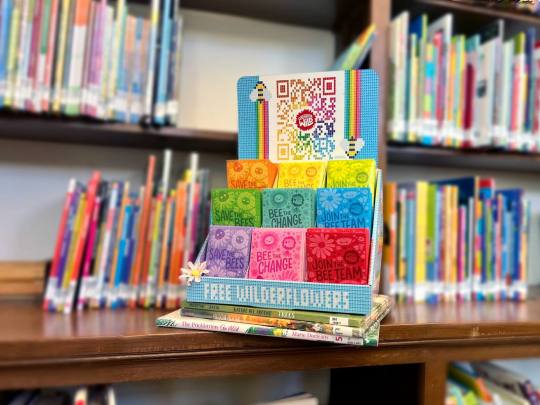
Named after Generation Wild’s official mascot “Wilder,” the Wilderflower Seed Mix was developed in partnership with Applewood Seed Co. and packets are now available for pickup at designated partner sites including more than 80 Little Free Library boxes.
By distributing 100,000 Wilderflower packets, Generation Wild is providing more than 56 million seeds for planting in every nook and cranny of the state. All seeds are regionally-native to Colorado, which is important for sustaining the living landscape of bees, birds, and other animals.
Additionally, by using flower species adapted to the Mile High climate, landscapers and gardeners need to use less water than if they were tending non-native plants.
“Applewood Seed Co. was excited to jump in and help Generation Wild identify a seed mix that is native to the Colorado region and the American West, containing a diversity of flower species to attract and support Colorado’s pollinator populations,” stated Norm Poppe, CEO of Applewood Seed Co. “We hope efforts like this continue to educate the public on pollinator conservation and the need to protect our native bees and butterflies.”
Concluding her statement Miller firmly stated that children grow up better outside, and if you or a parent you know agree with her, all the information on how to participate in Save the Bees! can be found here on their website, including a map showing all the local pickup points for the Wilderflower Seed Packets."
-via Good News Network, June 13, 2024
#wildflowers#wild flowers#colorado#bees#native bees#entomology#insects#save the bees#pollinators#bumblebees#bumble bee#i love bees#biodiversity#native plants#urban gardening#gardening#ecology#conservation#endangered species#wildlife conservation#enviromentalism#good news#hope#hope posting#solarpunk#denver#boulder colorado#colorado springs#libraries#public libraries
489 notes
·
View notes
Text
If you're in the U.S. and want to support local plants and pollinators, I hope you've heard of the Xerces Society. Weird name, but super cool resource for gardening for insect pollinators (and they work for other invertebrate species, too)
They've got regional native plant lists:
They've also got super helpful things in their resources section, including Washington's plan for helping bumble bees:
Another really cool resource is the National Wildlife Federation's list of key stone plant species by ecoregion:
3K notes
·
View notes
Text
Animal stamps
These are free to use wherever you want (giving me credit somewhere would be nice obviously)









I am planning on posting more so here's a masterpost so I can keep them all in one place
#Ideally I would have a neocities to put these on but I do not yet#Yes the native bee one is a slightly different size sorryyyyy#Web stamps#Web graphics#Neocities#Y2K#Animals#Animal art#Pixel art#Wasps#Bees#Insects#Radiodont#Parasites
577 notes
·
View notes